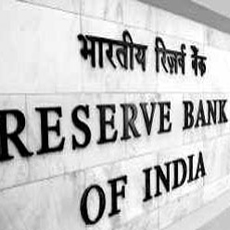Reserve Bank acts to deal with inflation
 The RBI holds a viewpoint that instead of taking stronger action when inflationary expectations have accentuated; pre-emptive action should be taken in the final analysis, even if it is outside the review of the policy. It said that increase in policy rates are part of a calibrated exit strategy initiated in Q2 review.
The RBI holds a viewpoint that instead of taking stronger action when inflationary expectations have accentuated; pre-emptive action should be taken in the final analysis, even if it is outside the review of the policy. It said that increase in policy rates are part of a calibrated exit strategy initiated in Q2 review.
In the Q3 review of the monetary policy (28th January, 2010), the RBI had increased the cash reserve ratio by 0.75 pct point to 5.75 pct. In January alone, the CRR acts by impounding liquidity by an anticipated Rs. 36, 000 crore. It indirectly controls interest rates.
On the other hand, the repo and reverse repo rates are overt rates indicating devices. However, it is completely upon the banks whether they will adhere to these signals and mark up their commercial lending rates.
It was specified by a few well known executives of banks that they will wait and observe. Liquidity continues to be abundant, despite the CRR hike of January.
The higher growth trajectory requires a robust credit growth, which at this point is not happening.
The action taken by RBI is completely in conformity with its recent monetary policy stance, even when the markets might be unaware. It should be noted that the announcement regarding the policy rate changes was made days ahead of 31st March, the date on which the accounts are closed by the banks. The banks' balance sheets will be hugely implicated by higher interest rates, especially their holdings of bonds and fixed income securities.
Speculations that the RBI will hold its hands till the annual credit policy statement for 2010-11 scheduled for April 20 is the other reason why new interest rate signals were not expected. Once the January policy was announced, a few senior RBI officials were seen as saying as much; however the RBI action has not been ruled out by the policy statement itself.
During the month of January, there was an unclear emphasis on combating inflation and anchoring inflation expectations.
Over all, the inflation remains higher. Though inflation in food was lower in previous weeks, it was touching a high of 17.81 per cent in the first week of March.